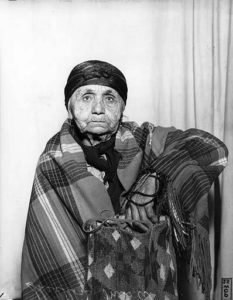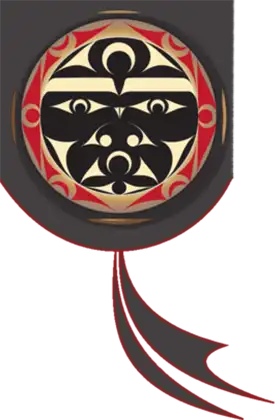siastənu Ruth Shelton
Ruth Sehome Shelton, siastənu, is known for being an indigenous historian who engaged people in the oral history of the Puget Sound region. Her way of telling stories and narratives brought life and meaning to the history of her people. Unable to escape the influence from the outside world, siastənu often discussed her reactions to changing times. Her sharp mind served her well as she bridged the past with a modern era.

Born in 1857, siastənu was raised in one of the last Samish longhouses on Guemes Island. Her father siʔhumʔ, commonly known as General Pierce, was of the Dungeness Klallam and of the Lummi, and her mother was c̓iʔsxʷatulic̓a of the Samish.
Being born only two years after the signing of the Point Elliot Treaty, siastənu lived through many cultural shifts. Families moved between reservations, or between their traditional homelands and the reservations. Trade flourished in the region, with pelts and hides going out as ships brought new foods, tools, textiles, and other goods. siastənu recalls the arrival of liquor and the profound impact it had. This was a glimpse of how wary the leaders were of the changing times.
As settlers came to the area, the daughters of tribal chiefs were sought for marriage. siastənu’s elder sister, Julia, was married to a man named Fitzhugh, who was the superintendent of the coal mine on Bellingham, and later the Indian Agent. siastənu spoke English very well, which she learned as a teenager while she lived with her sister and brother in law. Local ethnographer Wayne Suttles noted the importance of her command of English to the recording of the tribal history.
Throughout her life, siastənu spoke four languages in all; S’Klallam-Samish, Snohomish Lushootseed, Chinook Jargon and English.
Married three times in her life, she had four children. She first married William Coy in 1878 and had two sons, Hubert and Robert. After Coy’s death, she then married Thomas Forgil. They had no children. In 1889, after Forgil died, she moved to Tulalip and married Wheakadim, William Shelton. They had two daughters; Ruth, who died at an early age, and Harriette, who would carry on the legacy siastənu, preserving the language and culture for future generations.
